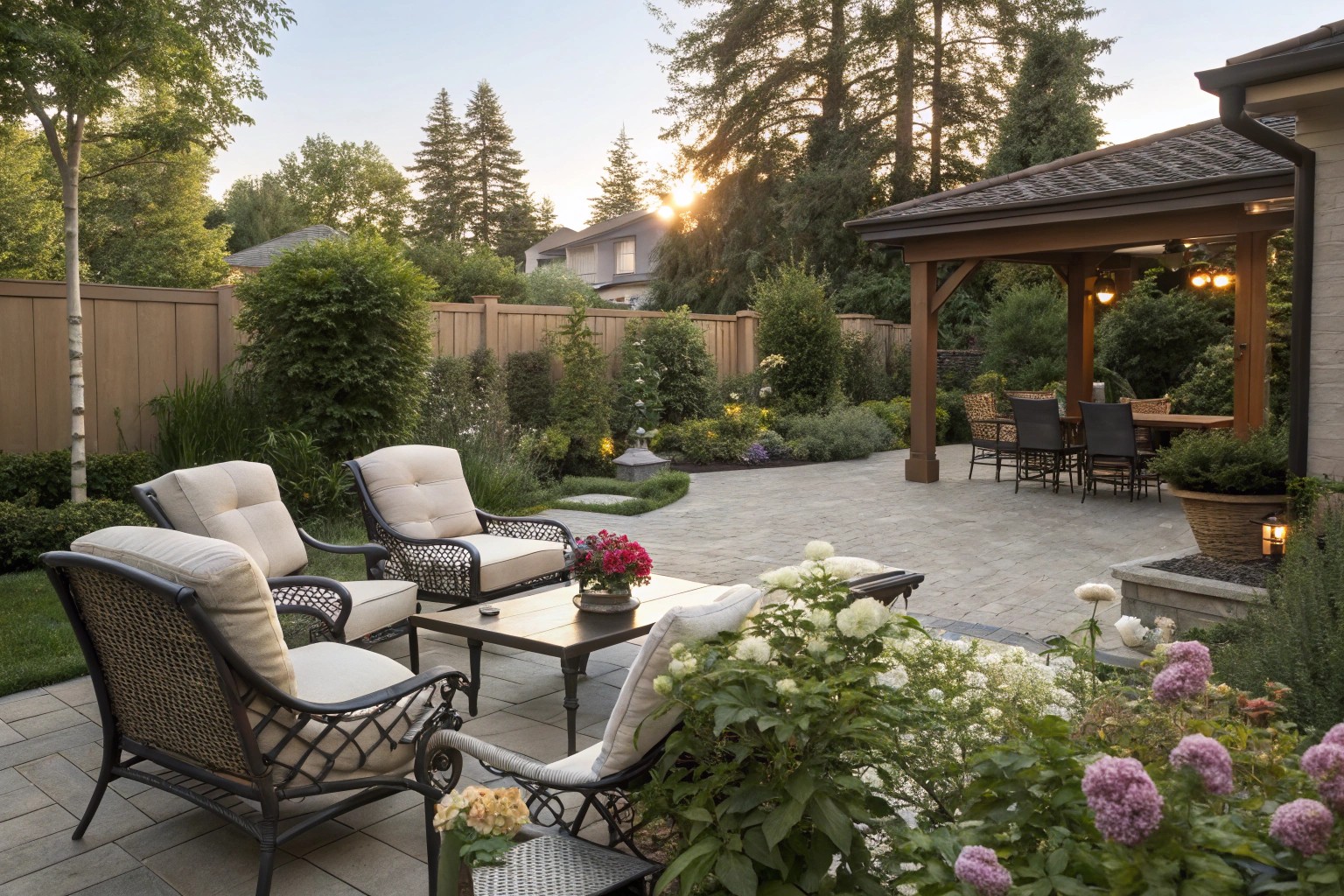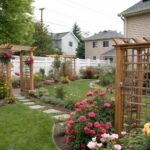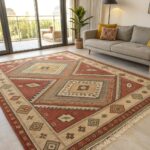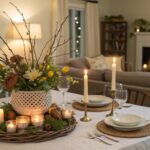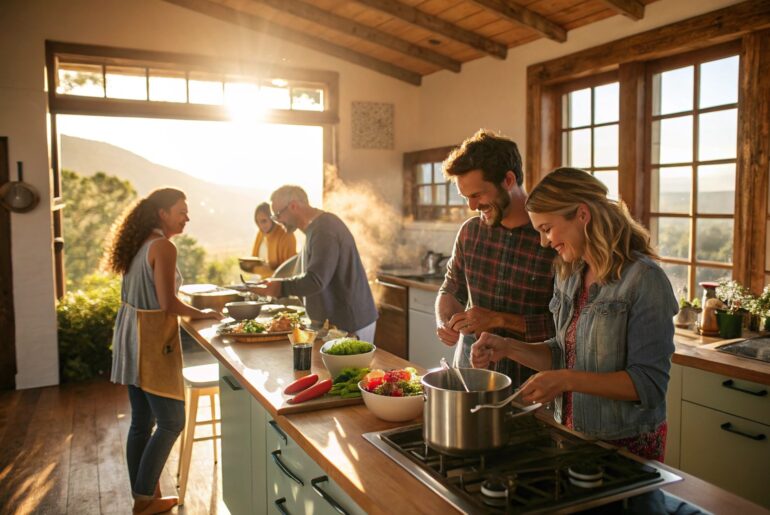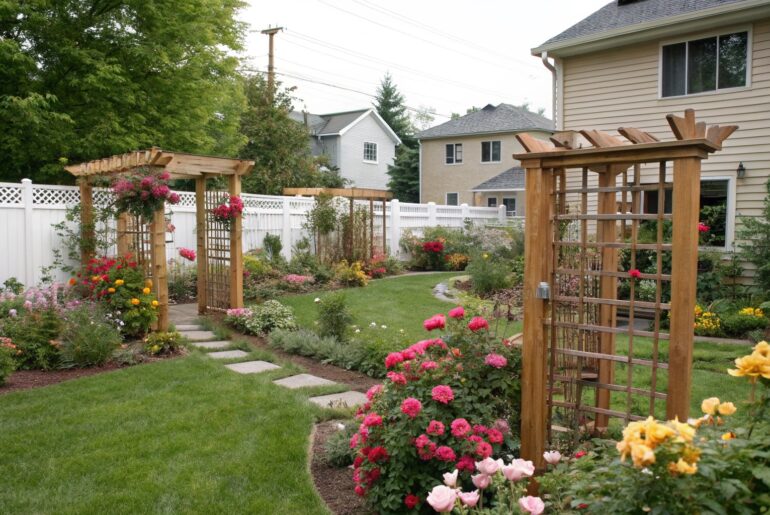Creating outdoor spaces that truly feel like an extension of your home has become more than a trend—it’s a lifestyle shift. As a garden designer, I’ve witnessed firsthand how transformative a well-designed outdoor living area can be for my clients. The perfect outdoor room balances comfort, function, and beauty while responding to the unique characteristics of your property. This guide will walk you through creating your own outdoor haven, drawing from real projects and practical solutions that have delighted homeowners across the country.
Understanding the Purpose of Your Outdoor Space
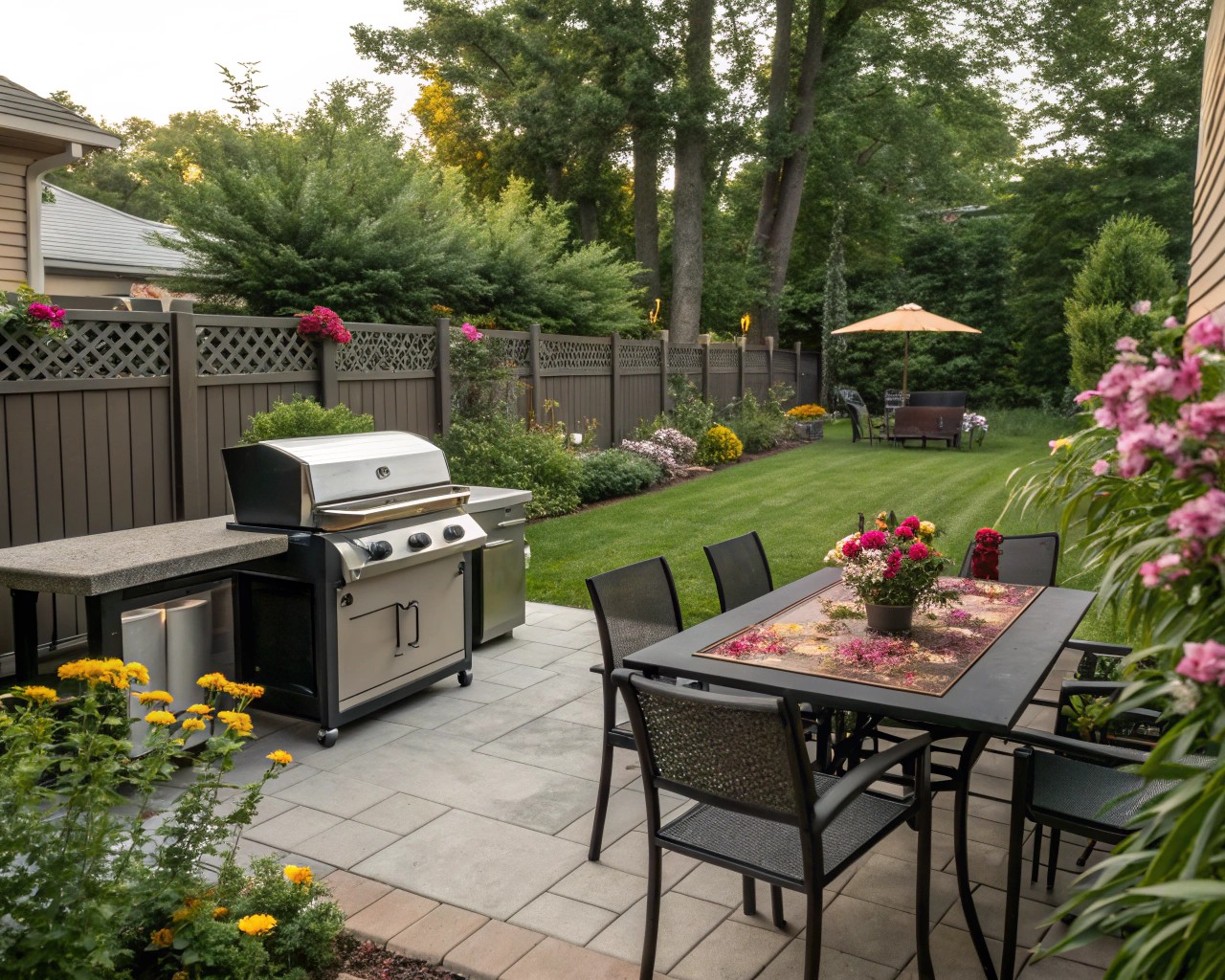
Before selecting furniture or accessories, take time to consider how you’ll use your outdoor space. This fundamental step guides all design decisions that follow.
When working with clients, I always start by asking questions about their lifestyle and entertainment habits. Most outdoor spaces need to serve multiple functions, so identifying priorities early helps create a cohesive design.
Key Questions to Consider:
- Will you host dinner parties or casual BBQs?
- How many guests do you typically entertain?
- Do you need a quiet retreat for relaxation?
- Should the space be kid or pet-friendly?
- What times of day will you most often use the space?
“After installing a front walkway, stairs, and landscaping for me last Fall, Josh Landscaping recently finished installing the second phase of a project (back patio, stairs, bubbling fountain, and landscaping)… I wanted to share my experience and let others know what a gem we have in this local company,” shared one homeowner.
The most successful outdoor rooms reflect the specific needs and personalities of their owners while remaining adaptable for different scenarios.
Creating Boundaries: Defining Your Outdoor Room
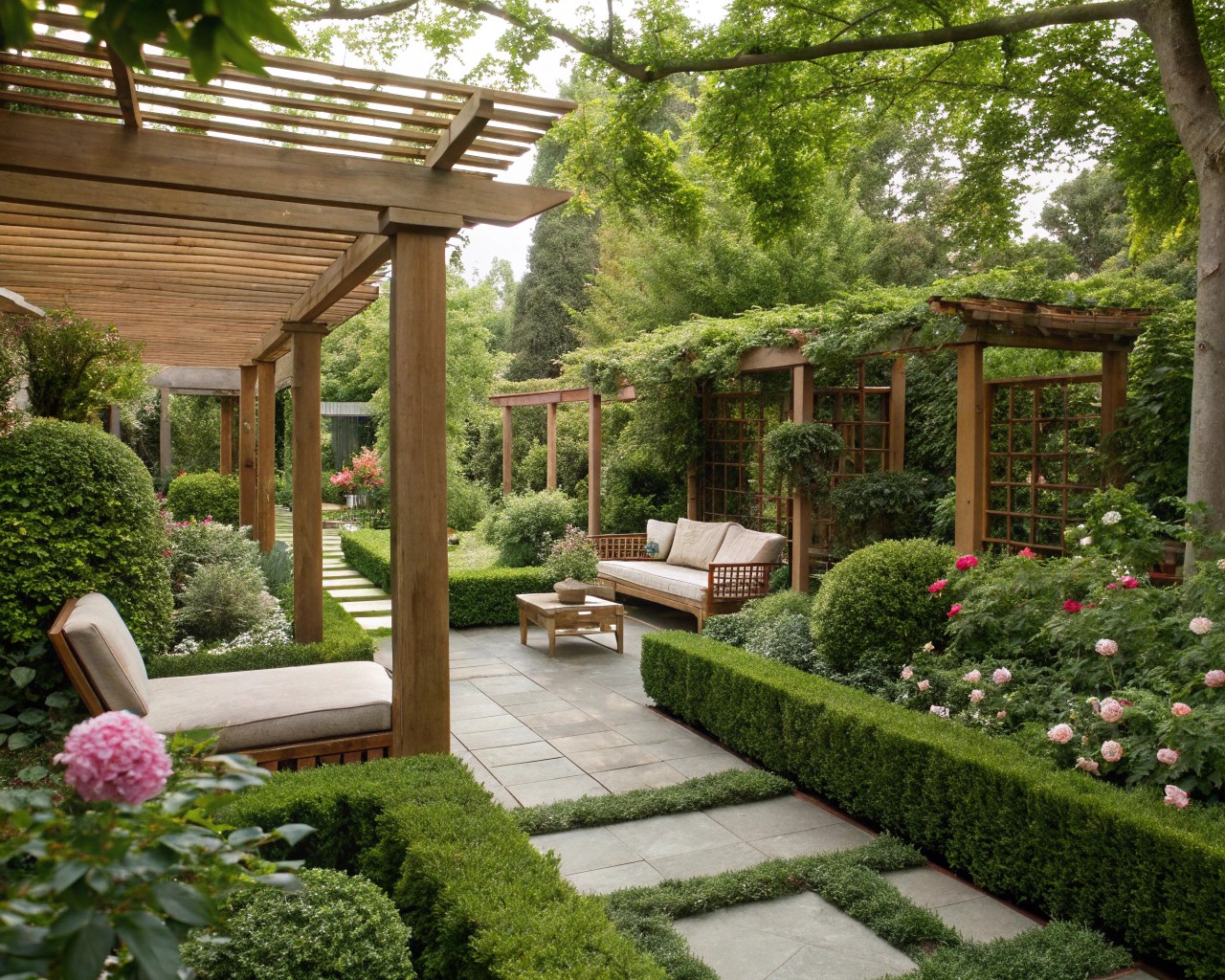
Just as interior rooms have walls, your outdoor living space needs defined boundaries to feel intimate and purposeful. These boundaries signal how a space will be used—small and secluded for private retreats, or large and open for social gatherings.
Effective Boundary Options:
| Boundary Type | Best For | Considerations |
|---|---|---|
| Existing Structures | Small spaces, budget-conscious designs | Use house or garage walls as natural boundaries |
| Plants & Hedges | Privacy, sound buffering, visual interest | Requires maintenance, takes time to mature |
| Pergolas/Arbors | Overhead definition, shade, growing vines | Can be substantial investment, adds vertical interest |
| Screens/Trellises | Quick privacy, flexibility, small spaces | Can be freestanding, movable options available |
| Fencing | Security, clear property lines, wind protection | Material selection impacts style and maintenance |
One of my favorite projects involved creating a U-shaped seating arrangement that naturally pulled people into conversation. The curved design established clear boundaries while framing a central table, making the space feel both intimate and accessible.
Comfort Elements That Make Outdoor Spaces Feel Like Home
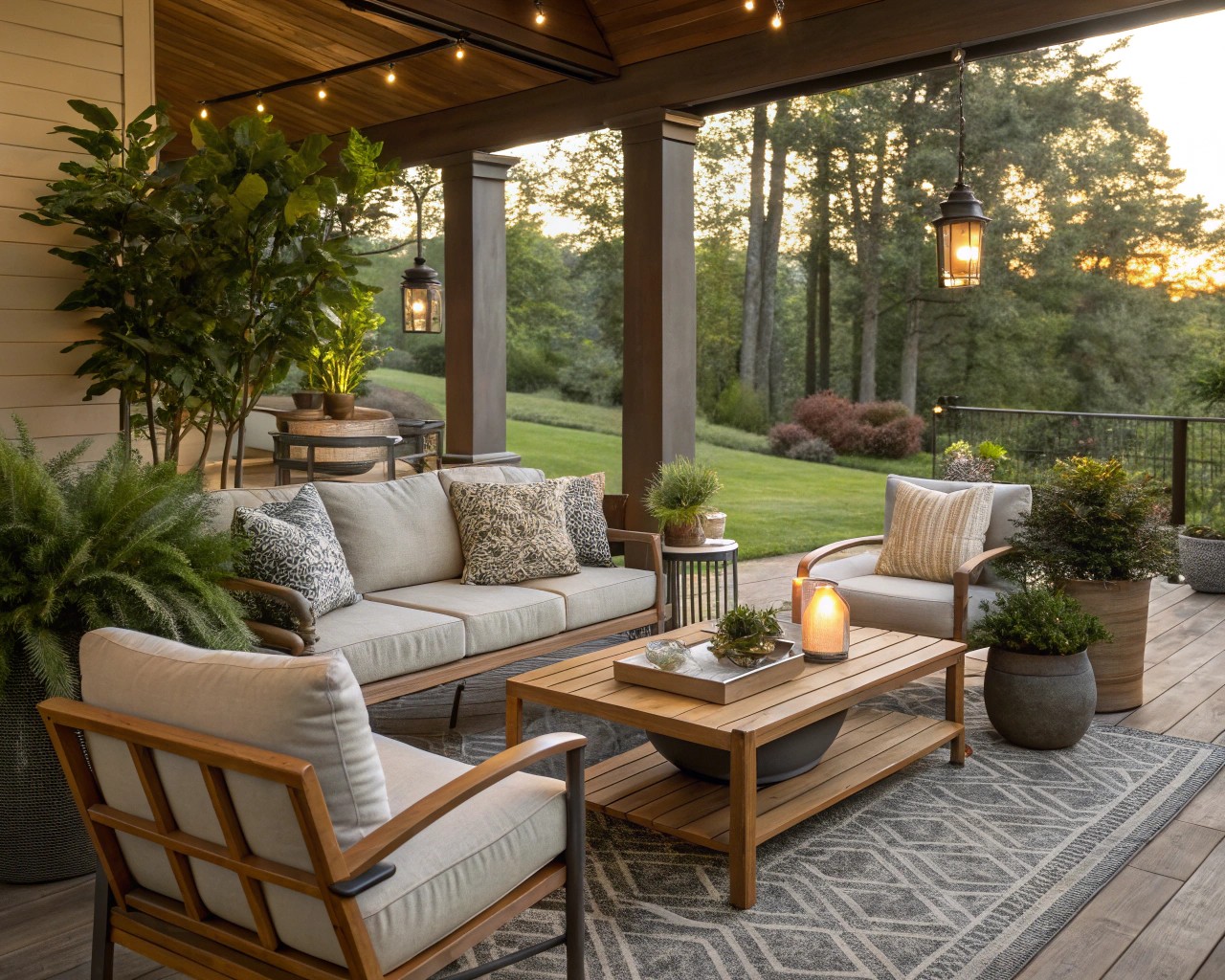
The secret to creating an outdoor room that feels as comfortable as your living room is bringing indoor comforts outside. Modern materials and design innovations have made it possible to enjoy plush seating, ambient lighting, and climate control in outdoor settings.
Weather-Resistant Furniture
“In my experience, investing in quality furniture designed specifically for outdoors is non-negotiable,” explains designer Rebecca Johnston. “We often add ‘C’ shaped tables that slide under furniture to bring tabletops conveniently close while remaining easily moveable”.
When selecting outdoor furniture, consider these factors:
- Durability: Look for materials like teak, aluminum, all-weather wicker, or HDPE (high-density polyethylene)
- Comfort: Add plush, weather-resistant cushions and throw pillows
- Functionality: Choose pieces that serve your specific needs (dining, lounging, etc.)
- Scale: Select furniture proportional to your space
Quality outdoor furniture from companies like Loll Designs is crafted from ultra-durable materials that can withstand all seasons. Their HDPE furniture can remain outside year-round without rotting or requiring paint, stain, or ongoing maintenance.
Climate Control Solutions
To truly extend your living space outdoors, you’ll need strategies for managing temperature extremes:
-
For shade and rain protection:
-
Retractable awnings
- Umbrellas (stationary or moveable)
- Pergolas with retractable canopies
-
Gazebos with solid roofs
-
For heat management:
-
Infrared patio heaters (which heat objects, not air)
- Fire pits or outdoor fireplaces
- Outdoor fans for air circulation
In one commercial case study, a restaurant called Joia on Main installed three large, connected structures with 20′ x 18′ motorized retractable roofs. This addition, combined with mounted heaters, extended their patio season by almost two months.
Functional Zones: Creating Purpose-Driven Areas
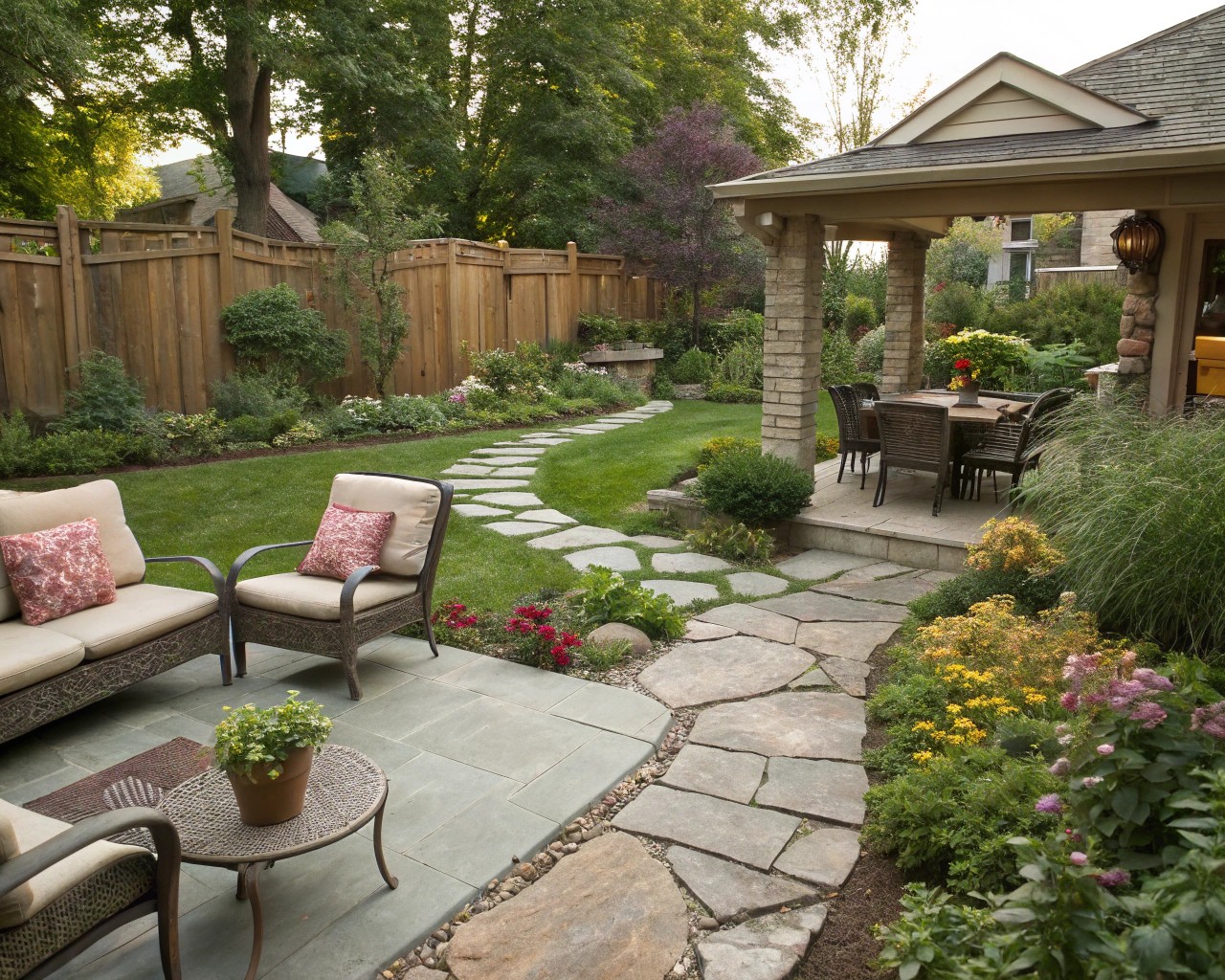
Just as your home has distinct rooms for specific activities, your outdoor living space benefits from clearly defined zones. Creating multiple functional areas allows for simultaneous activities and creates a more dynamic outdoor experience.
Common Outdoor Room Zones:
- Lounging Area: Comfortable seating for relaxation and conversation
- Dining Space: Tables and chairs for meals, positioned near the kitchen
- Cooking Zone: Grills, outdoor kitchens, pizza ovens
- Fire Feature Area: Fire pit or fireplace with surrounding seating
- Transition Spaces: Pathways that connect different zones
As landscape architect David Pfeiffer suggests, design your outdoor space with the same thoughtfulness as if you were designing the floor plan of a new house. Each outdoor area should have a logical connection to the inside of your home—for instance, placing the outdoor dining area near the kitchen.
Materials and Finishes That Withstand the Elements
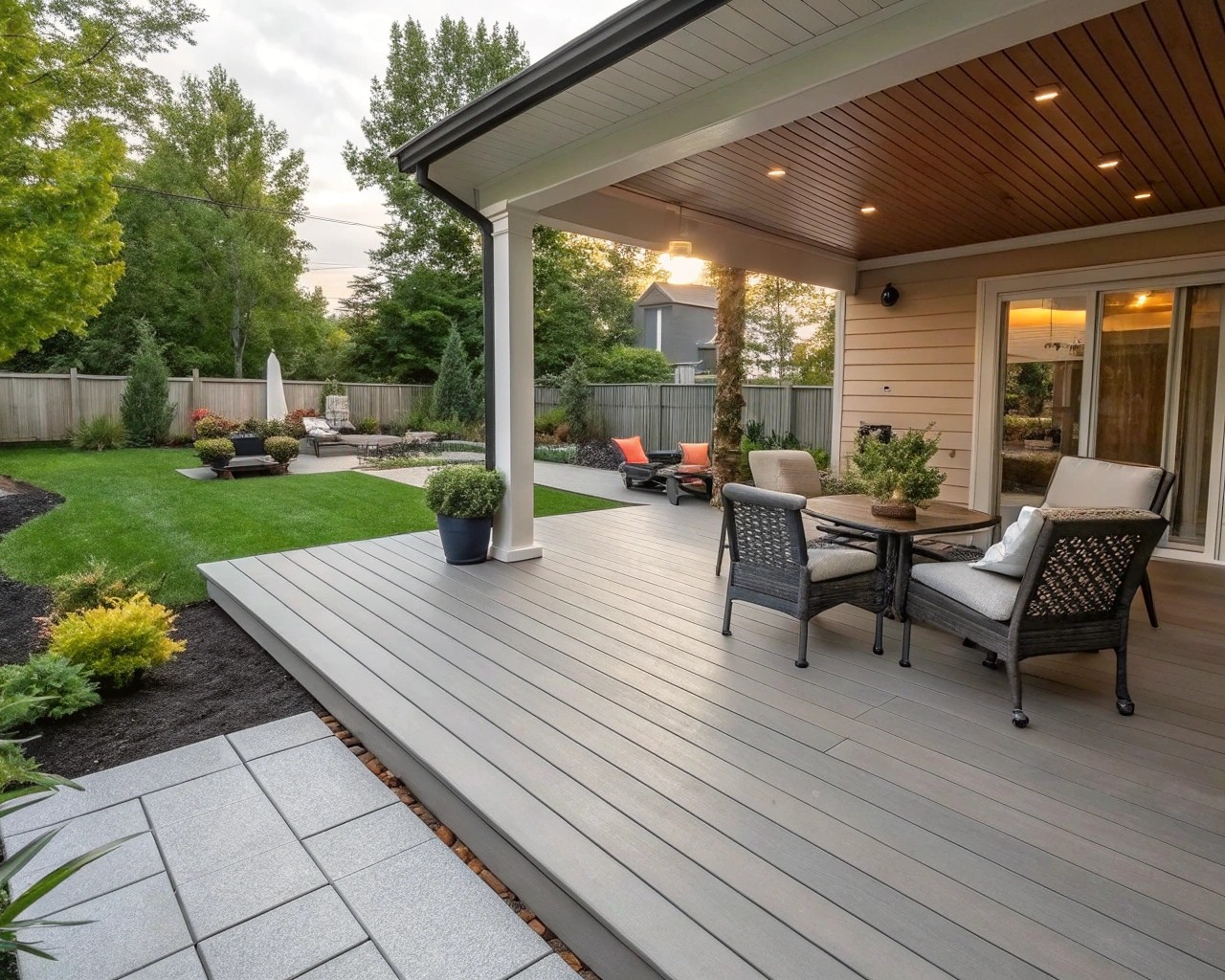
Selecting the right materials for your outdoor living room directly impacts both aesthetics and longevity. We need materials that can withstand sun, rain, temperature fluctuations, and constant use.
Flooring Options
The foundation of your outdoor room sets the tone for the entire space:
- Stone pavers: Durable, natural appearance, various patterns possible
- Concrete: Inexpensive, versatile (can be stamped or stained), easy maintenance
- Composite decking: Splinter-free, low maintenance, various colors
- Brick: Classic look, permeable options available, long-lasting
- Gravel: Budget-friendly, good drainage, casual aesthetic
“I love concrete,” says designer Stefan Hammerschmidt. “It’s inexpensive, easy to use, and I love it contrasted against lush green”.
Case Studies: Outdoor Transformations That Inspire
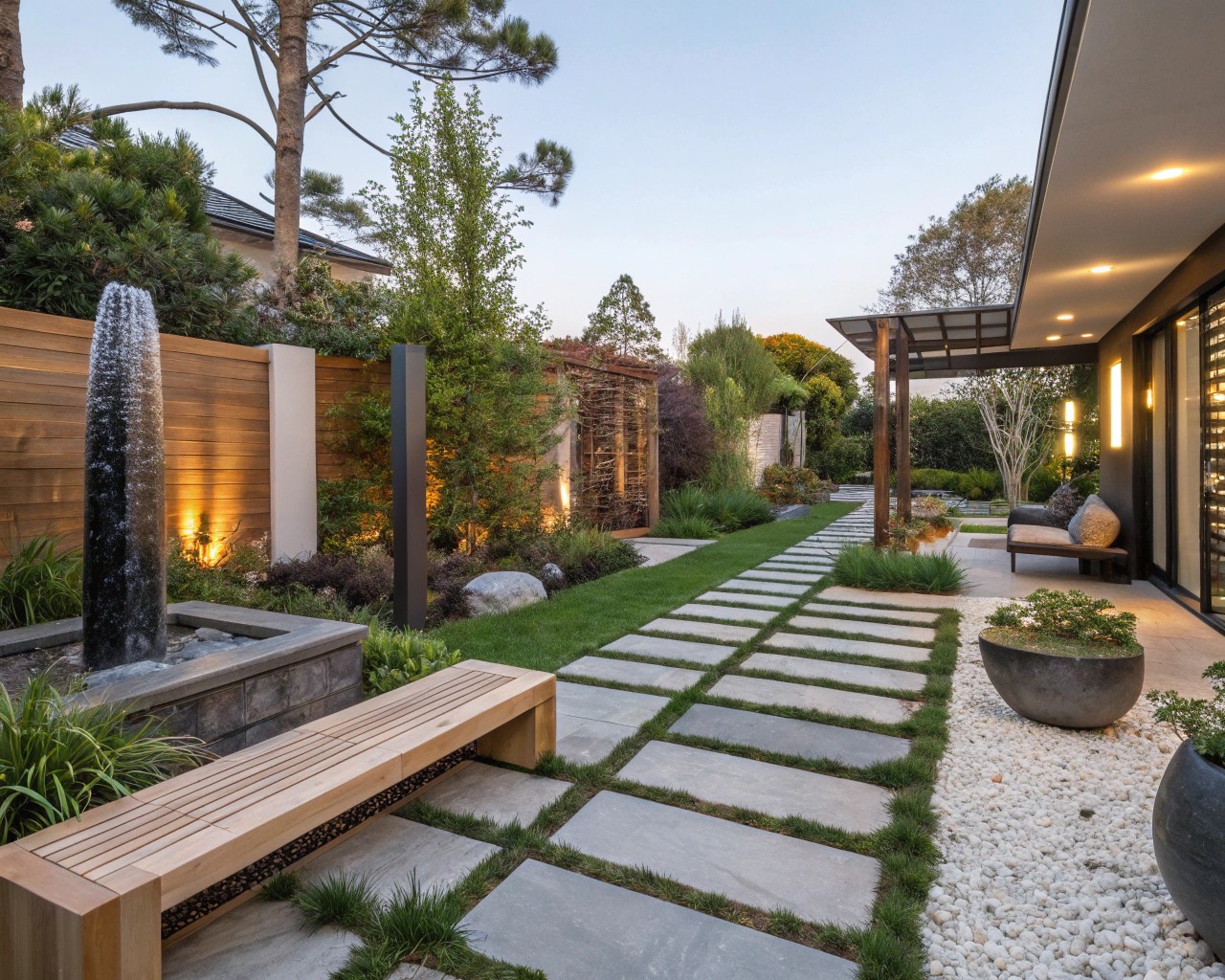
Looking at real-world examples provides valuable insights into successful outdoor room designs. These case studies demonstrate how thoughtful planning transforms ordinary outdoor spaces into extraordinary living areas.
Lakefront Property Transformation
One particularly inspiring project involved transforming a lakefront property into a multi-functional outdoor haven. The homeowners faced several challenges:
- Proximity to neighbors created privacy concerns
- The space lacked defined areas for different activities
- They wanted to preserve the natural beauty of their waterfront setting
Our solution incorporated a multi-level patio created from mixed stone pavers, brick, and slate. The design included:
- A dedicated outdoor kitchen with built-in grill and refrigerator
- A dining area that comfortably seats eight under a cantilever umbrella
- A separate lounging area around a sleek fire pit
- Strategic landscaping for privacy without blocking water views
“We love the combination of rocks, wood, and stone—it feels both modern and timeless,” remarked the satisfied homeowners.
Luxury Outdoor Kitchen and Dining Transformation
Another remarkable transformation involved creating a high-end outdoor kitchen and dining area. The client wanted a space that blended sophistication with functionality.
The final design featured:
- A custom kitchen station with BBQ grill, sink, outdoor dishwasher, and pizza oven
- Stone veneer and quartz countertops for elegant durability
- Concealed storage cabinets under a stairway
- Decorative screens and greenery for visual interest
- Low planters along walls for cascading ivy, creating a verdant backdrop
Styling Your Outdoor Living Room
Once the structural elements are in place, the fun of styling begins. This is where your outdoor space truly becomes an extension of your home’s interior style.
Creating a Cohesive Color Palette
I’ve found that outdoor spaces benefit from a harmonious color scheme that complements both the architecture of your home and the surrounding landscape.
Designer Stefan Hammerschmidt recommends:
- Plant hues of bronze, lush green, and gray-blue
- Soft gray flooring and fencing as neutral backgrounds
- Cushions that pick up colors from flowering plants like cannas, buffalo grass, or New Zealand flax
Adding Personal Touches
Just as you would with interior spaces, incorporate elements that reflect your personality:
- Lighting: String lights, lanterns, candles, and integrated LED systems
- Textiles: Weather-resistant pillows, throws, and outdoor rugs
- Accessories: Planters, artwork, and decorative objects
- Plants: Container gardens, hanging baskets, and strategic landscaping
“Always high on my list is to address lighting. It’s a game changer in all spaces, but can really add to the outdoor experience,” notes designer Rebecca Johnston. “And don’t forget throw pillows! They do as much for your outdoor seating as they do for indoor seating”.
Maintenance for Year-Round Enjoyment
Creating a beautiful outdoor room is just the beginning—maintaining it ensures years of enjoyment. We often focus on the initial design but underestimate the importance of ongoing care.
Seasonal Maintenance Checklist
| Season | Tasks |
|---|---|
| Spring | Clean furniture, check irrigation, refresh mulch, plant annuals |
| Summer | Regular watering, deadhead flowers, clean grill/kitchen areas |
| Fall | Cover or store sensitive items, clean gutters, prune plants |
| Winter | Protect pipes, remove snow from structures, check heaters |
Companies like Loll Designs create furniture that can remain outdoors year-round without special maintenance. Their HDPE furniture won’t rot and requires no paint or stain to maintain its appearance.
For areas with extreme seasons, consider:
- Modular furniture that can be easily rearranged or stored
- Retractable awnings or canopies that can be removed for winter
- Weatherproof covers for built-in features
- Drainage solutions to prevent water accumulation
Conclusion: Creating Your Personal Outdoor Haven
Throughout my career designing outdoor spaces, I’ve seen how a thoughtfully created outdoor room can transform not just a property, but a family’s lifestyle. These spaces become the backdrop for birthday celebrations, quiet morning coffees, and impromptu gatherings with neighbors.
The most successful outdoor rooms balance practical considerations with personal expression. They invite you to linger longer, breathe deeper, and connect more meaningfully with both nature and loved ones.
As you begin planning your own outdoor living room, remember that the process can evolve over time. Start with the fundamentals—comfortable seating, adequate shade, and defined boundaries—and allow your space to grow with your needs and inspirations.
Your outdoor room should ultimately feel like a natural extension of your home—a place where the walls have simply fallen away, but the comfort, function, and personality remain.

